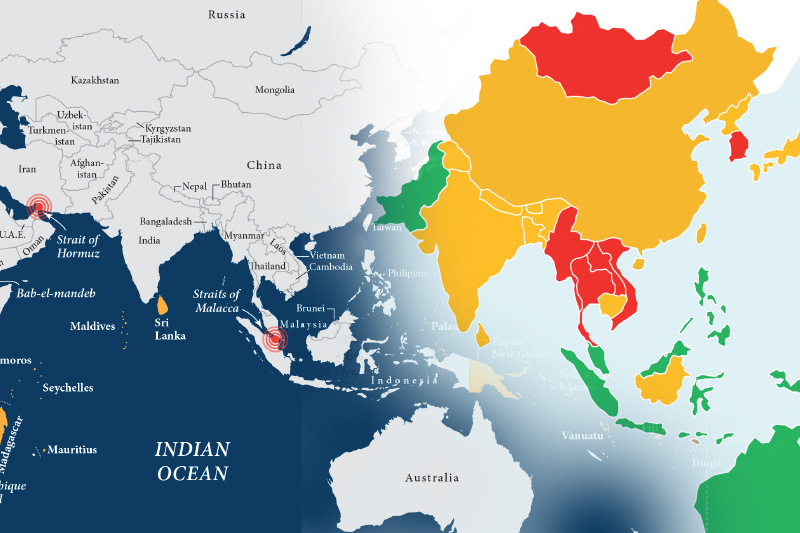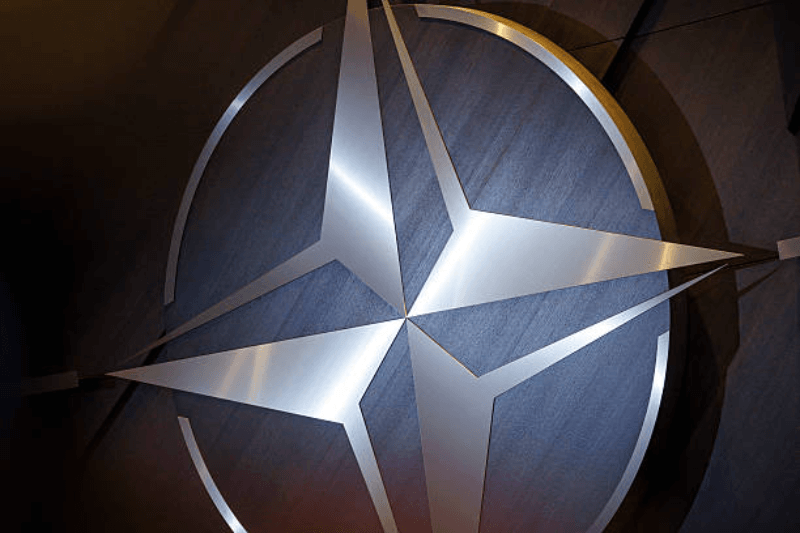
Indo-Pacific Geopolitics
An enormous geographic region known as the Indo-Pacific stretches from the east coast of Africa to the western shores of the Americas. The Indo-Pacific is still a developing idea, but it has advanced significantly since its inception. This region’s geopolitics are in transition. China dislikes the term “Indo-Pacific,” favoring “Asia-Pacific.”
China and other nations are vying for influence along Africa’s east coast. China has been involved in Africa for the past 20 years, investing a total of $155 billion there, but it now appears to be slowing down, with investments down by 55% in the last two years. Other nations now have the chance to exert more influence in Africa. China entered the Indian Ocean a few years earlier than anticipated by taking advantage of the chance provided by the anti-piracy operations in the Gulf of Aden to gain experience in naval operations. In 2017, China opened a base in Djibouti, which was a significant development. China will have more clout as a result of this and its acquisition of stakes in about 100 ports spread across several continents. While the PLA Navy’s expanding presence in the Indian Ocean Region (IOR) is a cause for concern, its other activities, like fishing, are just as significant. The Yuan Wang 5 satellite tracking vessel’s docking at Hambantota Port last year gave South Asia a new geopolitical dimension. Prior to now, the berthing of Chinese submarines in the area caused alarm. The geopolitical calculations in the northern Indian Ocean are heavily influenced by China’s efforts to develop Pakistan’s Gwadar Port and the potential for it to be used as a naval base. It is also concerning that China is using “research vessels” to gather “vital information” in the IOR.
When China held meetings with Afghanistan, Nepal, and Pakistan during the height of Covid-19, and later added Bangladesh and Sri Lanka, it was evident that China was working to increase its influence in South Asian nations. A meeting of the China-South Asia E-commerce Cooperation Forum on Poverty Alleviation in Rural Areas was held, and they established the China-South Asian Countries Emergency Supplies Reserve, China-South Asia Poverty Alleviation and Cooperative Development Centre, and so forth. None of these projects, however, have made much progress. China also suggested creating a forum for the Indian Ocean islands. The China-Indian Ocean Region Forum, which brought together 19 countries in November 2022, could rival the Indian Ocean Rim Association and the Indian Ocean Naval Symposium. China and South Asian countries are working together more on defense issues. The China-Pakistan Economic Corridor and the China-Myanmar Economic Corridor are the results of China’s efforts to resolve the Malacca Dilemma.
Keep Reading
Another critical element of the Indo-Pacific is China-ASEAN relations. China has successfully engaged the ASEAN nations on a bilateral basis. The South China Sea Declaration of the Conduct of Parties has a reputation for more violations than adherence. China and ASEAN are still negotiating a code of conduct for the South China Sea. In the meantime, ASEAN has made it clear in its Indo-Pacific outlook that it does not want to be forced to choose between the US and China. ASEAN is nevertheless crucial to the Indo-Pacific. The security environment in the Indo-Pacific has taken on a new dimension as a result of recent revelations about the Ream Base that China is building in Cambodia. Indonesia and other nations have expressed support for China’s proposed Global Security Initiative (GSI). This initiative will rule the Indo-Pacific for the foreseeable future, along with China’s recent launches of the Global Initiative on Data Security, Global Development Initiative, and Global Civilization Initiative.
The increasing influence of China in the South China Sea is no secret. However, the world got a preview of what’s to come with its most recent initiatives to advertise GSI in the South Pacific. One of the areas where the action will be in the near future is the Pacific Island nations. Russia and China are increasingly frequently conducting joint patrols over the Sea of Japan and the East China Sea. The most recent occurred in November 2022. Chinese PLA aircraft using chaff on an Australian aircraft in the South China Sea and a Chinese navy ship firing a laser beam at an Australian patrol aircraft over the Arafura Sea near Australia are signs of things to come. The actions of China in the Taiwan Strait have raised suspicions.
An important development in the Indo-Pacific has been the deterioration of US-China relations. The spy balloon incident, Nancy Pelosi’s trip to Taiwan, and China’s responses to those events have exacerbated the Indo-Pacific region’s already precarious geopolitical situation. The 3Cs Framework, which stands for “compete, collaborate, and confront,” is the name of the US administration’s approach to dealing with China. The Indo-Pacific is likely to be significantly impacted by US-China relations, which appear to be more competitive in nature. China detests the Indo-Pacific, Quad, and AUKUS together. Despite China’s belief that Quad will vanish like sea foam, it has gained strength. In the Indo-Pacific, how China responds to this development will be important.
The aforementioned account of the events in the Indo-Pacific amply illustrates how complex the situation is currently. China views the Western efforts to contain it, such as the Blue Dot Network, Build Back Better World, Global Gateway, and the Indo-Pacific Economic Forum. The Indo-Pacific has yet to experience the full effects of the Russia-Ukraine war. China will undoubtedly play a significant role in this region.




